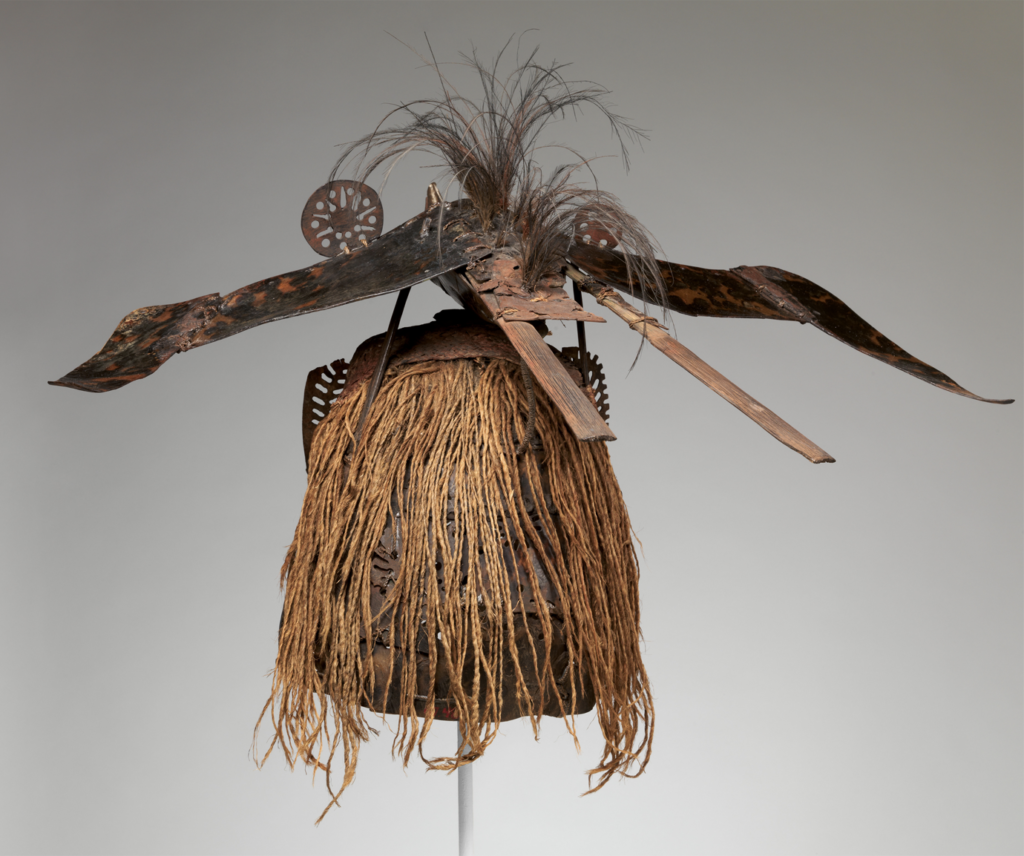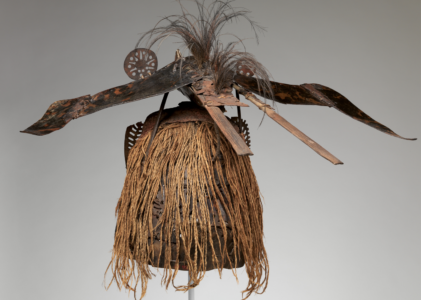
[credit: MASK (BUK, KRAR, OR KARA), Torres Strait Islander, mid to late 19th century.]
The Task of Seeing Something Foreign in the Mirror
I’m an artist who grew up watching Saturday cartoons. I face this mask and ask these questions:
1. Are the carved structures around the face meant to be leaves? Does that mean the mask should be understood as peering from greenery?
2. Are the eyes expected always to be at this orientation? If not, then what does this example indicate?
3. The topknot seems clearly to be a bird. Is it? What does it say at the topmost position and at that dominant scale? Is the top piece always a bird?
4. What look to me like waterskis attach the bird to the mask underneath. Does the culture have a name for them?
5. Are the carved disks on the wings a second pair of eyes? Or ears? Or eyes for seeing, like infra-red goggles, into another medium?
6. Is this made by a family member of the deceased? Or are the details suggested to a tribal maker?
7. Is this danced by a family member? Of the same gender? Or by a designated dancer or spiritual leader?
8. What kind of motions are expected in the dance? Does it have an element of choreography or is the instruction to break with inhibitions? Or other?
9. Are the materials gathered from a sacred part of the forest? From the place the deceased had lived?
Where this touches me is in my education. Anthropology, symbol-making, symbol-wielding, technique and artistry. All mystic messages snap to my brain. If I want to feel something I can put my cartoon-fed psyche in a New Guinean’s bare feet and experience my tender-footed fear of boogey-men.

